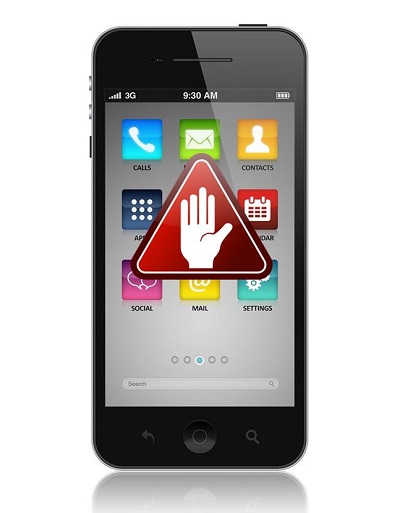A couple used the application to chase down the man who stole their phone in West Delhi.
A 22 year old man identified as Sandeep Kumar was likely rather surprised to find himself being arrested after the owners of a smartphone used a mobile app to track him down after what he likely thought was the successful theft of that device.
The owners had an application installed on the mobile phone that allowed it to be tracked and found.
The couple simply activated the mobile app from a remote location and found out where Kumar was hiding so that they could easily hand him over to the police. Kumar has allegedly stolen several mobile devices before, so it must have come as quite a shock to him when his discovery capture occurred as easily as it did for the smartphone owners. Before his arrest, he worked at a power distribution company in Delhi as a recovery agent.
The mobile app was actually meant to help owners to find their smartphones when they have been mislaid.
 Nishant Verma, the owner of the stolen smartphone, is a resident of Janakpuri in West Delhi. He explained to the police that the cell phone reception in his area is spotty, so he needs to step outside his home whenever he wants to send a text or make or receive a call. That was exactly what he was doing when he stepped out of the house on August 21, when Kumar allegedly grabbed the iPhone 6 out of his hands before speeding off on a scooter. This, according to one of the police officials involved in the case.
Nishant Verma, the owner of the stolen smartphone, is a resident of Janakpuri in West Delhi. He explained to the police that the cell phone reception in his area is spotty, so he needs to step outside his home whenever he wants to send a text or make or receive a call. That was exactly what he was doing when he stepped out of the house on August 21, when Kumar allegedly grabbed the iPhone 6 out of his hands before speeding off on a scooter. This, according to one of the police officials involved in the case.
Verma immediately contacted his wife who used the Find My iPhone app on her iPad to track down the stolen smartphone. The application provided her with navigation directions and made it possible for the couple to find out just where the accused was hiding.
Kumar continued to change locations throughout the time that followed the theft, but the couple kept up with him through the mobile app, until they finally spotted his scooter in the Sagarpur area and worked with locals to overpower him. The police were called and Kumar was restrained until the law enforcement could arrive and arrest him.
This type of software has spread like wildfire among mobile device users but are stopping ads from being displayed.
The AdBlock ad blocking software and app has now reached the point that it has more than 200 million users, and it is allowing those individuals to surf the web without the invasion of excessive advertisements on their screens.
That said, the company has generated controversy by letting some advertising slip through its net, for a price.
People have been becoming frustrated with the constant barrage of popup advertisements and crowded websites and are using ad blocking apps and programs to help them to smooth out their internet usage experience. While many people realize that the advertising on websites are frequently the main source of income for a site and that it is that income that makes the free information possible, they continue to object to how much data is being collected from them and question the mobile security and convenience of the current experience. For this reason – among others – many are choosing to block these forms of marketing.
A lack of transparency in data collection has become a major driver for the use of ad blocking software.
 People simply don’t know which ads are collecting their information nor what specific data is being taken and tracked. Because of the mystery behind this data collection, many mobile device users are deciding to simply block the advertisements in a “better safe than sorry” strategy.
People simply don’t know which ads are collecting their information nor what specific data is being taken and tracked. Because of the mystery behind this data collection, many mobile device users are deciding to simply block the advertisements in a “better safe than sorry” strategy.
This type of mobile security or advertising blocking software works when a device user downloads a plug-in which can be installed into any of several different popular internet browsers.
That said, a recent report assembled by Adobe and a startup from Dublin called PageFair, have determined that this year, alone, there will be $22 billion in lost advertising revenue from ad blocking software and app usage. When compared to the previous year, that represents an increase of 41 percent. In the report, it was also shown that over one in three internet users in some countries – particularly in European nations – now have some form of advertising blocking strategy in place.
 Nishant Verma, the owner of the stolen smartphone, is a resident of Janakpuri in West Delhi. He explained to the police that the cell phone reception in his area is spotty, so he needs to step outside his home whenever he wants to send a text or make or receive a call. That was exactly what he was doing when he stepped out of the house on August 21, when Kumar allegedly grabbed the iPhone 6 out of his hands before speeding off on a scooter. This, according to one of the police officials involved in the case.
Nishant Verma, the owner of the stolen smartphone, is a resident of Janakpuri in West Delhi. He explained to the police that the cell phone reception in his area is spotty, so he needs to step outside his home whenever he wants to send a text or make or receive a call. That was exactly what he was doing when he stepped out of the house on August 21, when Kumar allegedly grabbed the iPhone 6 out of his hands before speeding off on a scooter. This, according to one of the police officials involved in the case.
 People simply don’t know which ads are collecting their information nor what specific data is being taken and tracked. Because of the mystery behind this data collection, many mobile device users are deciding to simply block the advertisements in a “better safe than sorry” strategy.
People simply don’t know which ads are collecting their information nor what specific data is being taken and tracked. Because of the mystery behind this data collection, many mobile device users are deciding to simply block the advertisements in a “better safe than sorry” strategy.